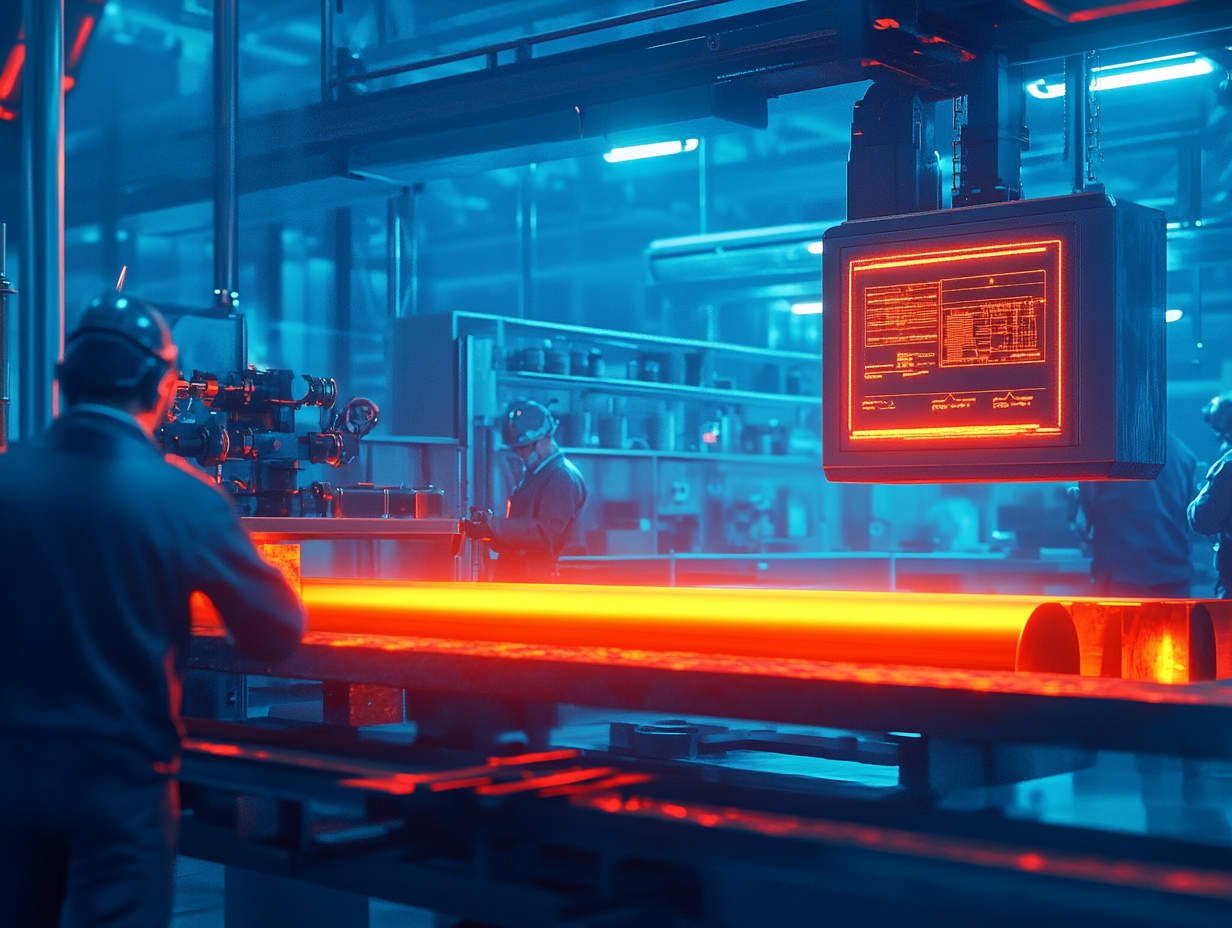

Hot bending is a critical metalworking technique that allows for the shaping of materials that are difficult to form under normal conditions. By heating metals to a specific temperature, this method enhances their elasticity and prevents issues such as cracking or deformation. Hot bending is widely used in industries that require durable and precisely shaped components, such as aerospace, automotive, and energy. This blog explores the fundamentals, advantages, and applications of hot bending, offering valuable insights into why it is an essential part of modern manufacturing.
1. Fundamentals of Hot Bending
Hot bending involves heating a material to its recrystallization temperature, which increases its flexibility and makes it easier to form. This process consists of three primary stages:
- Heating:
- The material is heated to a temperature above its recrystallization point but below its melting point. This ensures the material becomes pliable without losing its structural properties.
- Controlled heating is typically achieved using furnaces or induction heating systems.
- Shaping:
- Once the material reaches the desired temperature, it is shaped using hydraulic presses, molds, or rolling machines.
- The process allows for complex bends that are difficult to achieve at room temperature.
- Cooling:
- After shaping, the material is cooled in a controlled environment to maintain its structural integrity.
- Gradual cooling prevents thermal shocks, which can weaken the metal.
2. Key Advantages of Hot Bending
Hot bending offers significant advantages over other metal-forming techniques, particularly for high-strength and rigid materials:
- Reduced Risk of Cracking:
Heating the material reduces internal stresses, preventing cracking during the bending process. This makes it ideal for thick or brittle metals. - High Compatibility with Tough Materials:
Metals like high-carbon steel, titanium, and stainless steel, which are challenging to shape through cold methods, can be easily bent using hot bending. - Support for Complex Designs:
The increased flexibility of heated metals enables the creation of intricate and detailed components, which are essential in advanced engineering applications. - Improved Durability:
Controlled heating and cooling processes ensure that the material retains its strength and resistance after shaping. - Energy Efficiency:
Since heated metals require less mechanical force to bend, hot bending reduces the energy consumption of the manufacturing process.
3. Materials Used in Hot Bending
Different materials are suited for hot bending based on their physical properties and industrial requirements:
- High-Carbon Steel:
Widely used in construction and energy sectors due to its strength and durability. - Titanium and Alloys:
Lightweight and robust, these materials are preferred in aerospace and defense applications. - Stainless Steel:
Commonly used in chemical processing equipment and pipelines for its resistance to corrosion and wear.
4. Applications Across Industries
Hot bending is a versatile process with applications in multiple sectors:
- Aerospace:
- Aircraft fuselages, engine components, and structural parts are often shaped using hot bending.
- Precision is critical in this industry, making hot bending indispensable.
- Automotive:
- Used for shaping chassis frames, exhaust systems, and structural reinforcements.
- The process ensures strength and durability while accommodating complex designs.
- Energy:
- Ideal for manufacturing pressure vessels, pipelines, and components for wind and hydro turbines.
- The technique provides durability under extreme operational conditions.
- Infrastructure:
- Utilized in bridges, skyscrapers, and industrial facilities for shaping steel reinforcements and structural elements.
5. Hot Bending vs. Cold Bending: A Comparative View
| Feature | Hot Bending | Cold Bending |
|---|---|---|
| Temperature | Performed at high temperatures. | Done at room temperature. |
| Material Suitability | Suitable for thick and tough metals. | Ideal for thin and lightweight metals. |
| Complexity | Allows intricate designs. | Limited to simpler shapes. |
| Cracking Risk | Minimal due to increased flexibility. | Higher risk in rigid materials. |
| Energy Consumption | Reduces mechanical force required. | Higher mechanical force needed. |
Conclusion
Hot bending is an essential metal-forming technique that combines precision, flexibility, and durability. By heating materials to optimal temperatures, it minimizes defects, facilitates complex designs, and enhances the overall performance of components. Industries such as aerospace, automotive, and energy rely heavily on this process to produce high-quality, reliable parts. With advancements in heating and shaping technologies, hot bending continues to be a cornerstone of modern manufacturing.

